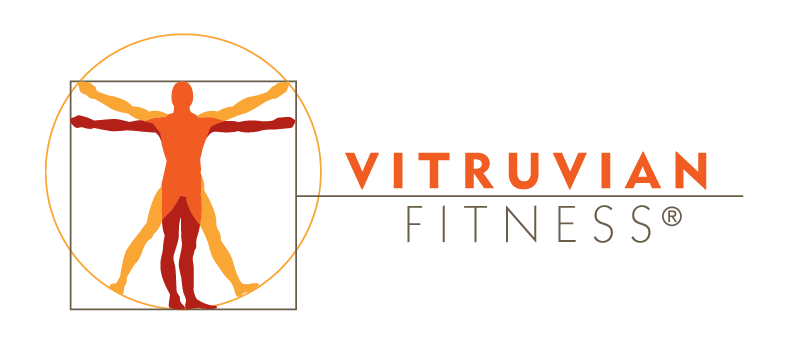BLOG
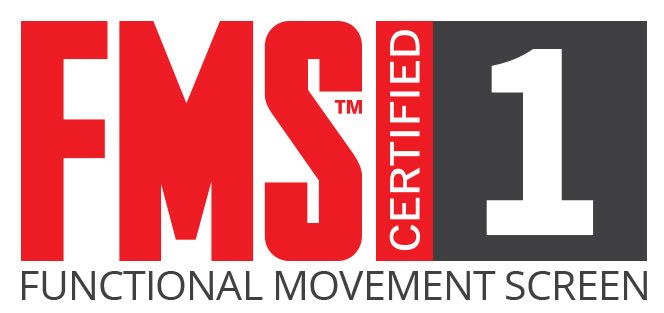
By Tom Wigginton
•
07 Apr, 2024
New-Client Onboarding As part of our new-client onboarding experience, we take a detailed history of your health, catalog any injuries from the past or present, discuss a variety of other exercise-readiness issues and perform a qualitative movement screen called the FMS. All this to make sure we understand what makes you unique and special – so your workouts are not too easy and not too hard from the get-go. It’s the Goldilocks of exercise programming – just right. It's starts with a story about a car. Picture your car parked in the garage. In this scenario, you work from home. And because you work from home, you don’t know that the front-end of your car is out of alignment. If your car is just parked in the garage and you never drive it, it doesn’t actually matter that the wheels are out of alignment. Right? Now let’s say you do use the car but only for occasional short trips to the 7-11 a couple blocks away to buy beer and cigarettes. In this case, it probably still doesn’t matter much. But now let’s imagine you get a sweet new job that means you commute on the highway 15 miles each direction every day. Well now the fact that your front-end is out of alignment matters quite a lot. Now you’re driving at highway speeds, 30 miles per day, 5 days per week. After a couple weeks of ignoring the problem, the consequences of the misalignment become evident. At first, it’s uneven tire wear. And then the shock absorbers and steering parts quit handling like they used to. And then other stuff breaks and then it’s this, and then it’s that. The repair bills get more expensive the longer you ignore the situation and all this could have been easy and inexpensive to repair had you just fixed the alignment to begin with. It's not actually a story about a car. Now let’s imagine that the sweet new job is a metaphor for a new exercise program and that car is a metaphor for your body. Before you start doing a lot of new exercises, we recommend checking out how well your body and all its moving parts move. The Functional Movement Screen Introducing: The Functional Movement Screen , aka the FMS: a quick and simple way to evaluate how well your moving parts move. The Functional Movement Screen is a screening tool designed to assess movement patterns in individuals. It consists of a series of seven fundamental movement patterns that are evaluated through specific tests. These movement patterns include squatting, lunging, reaching, bending, and others. The purpose of the FMS is to identify movement dysfunctions, asymmetries, or limitations that may predispose individuals to injury or affect their performance. The FMS has its origins with the partnership of two physical therapists – Gray Cook (of "Cook Hip Lift" fame) and Lee Burton. While working with young athletes, they observed signs of movement dysfunction that frequently resulted in injuries. The pair created a system that helped identify inefficiencies in movement and a process to correct those inefficiencies before they lead to injuries. Since the mid 1990s, they’ve refined the system and taught it to thousands of health and fitness professionals around the world. We began using the FMS in 2010 when we opened Vitruvian Fitness. At our new-client onboarding sessions, the FMS is just the beginning of the process. Using the data we collect during the screen, we implement a variety of strategies to help our clients move better, more efficiently, and more safely. And all this leads to stronger, more powerful, more athletic. healthier, and injury resistant members. To paraphrase Gray Cook, “let’s play to our strengths, work on our weaknesses,” and move forward together to reach even greater heights. Curious to learn more? We encourage you to do a 30-Day Trial Membership. In 30 days, you will get a private onboarding session that includes the Functional Movement Screen® , then 8 semi-private training sessions doing the program we design based on that first session. And you’ll get to be a part of one of the most inviting, inclusive, and fun communities you’ll find anywhere. At the end of your trial, you get to decide if you liked it and if you want to continue with a regular 6-month membership. All the options and prices are on our Membership page. Click here to sign up now! Our facility is conveniently located on the northwest corner of Denver in beautiful downtown Wheat Ridge.

By Tom Wigginton
•
15 Mar, 2024
How do you know how much of each to do? This is a great question. It may not surprise you that the answer is, "it depends." Some people love doing cardio. Some people love lifting weights. Some people dislike both. The short answer to this question, obviously, is both. Do both. Lots.
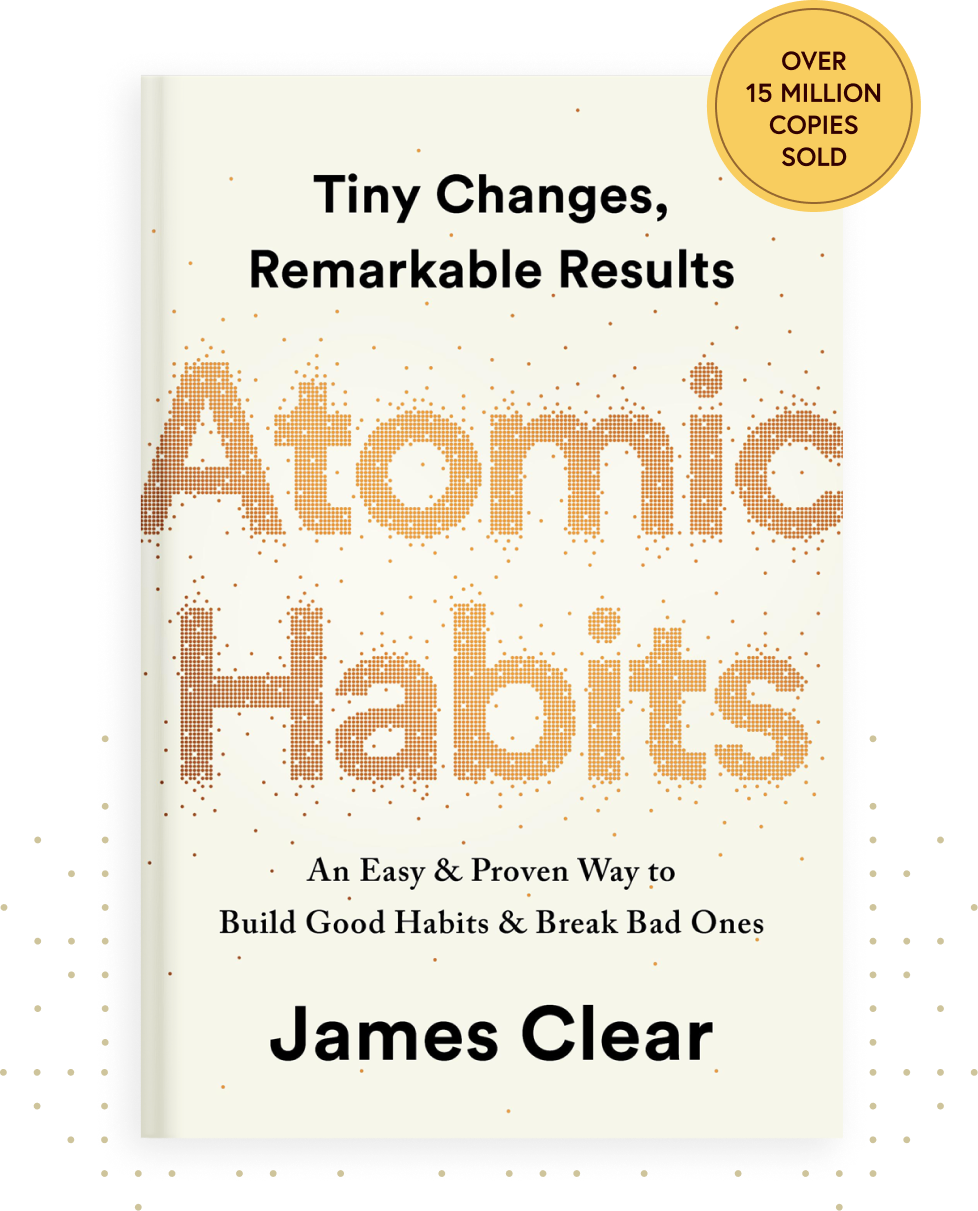
By Tom Wigginton
•
08 Mar, 2024
What Are Kaly, Mark, and Tom Reading? Continuous Learning, Education, and Innovation are among our core values here at Vitruvian Fitness®. Reading good books helps us grow as people and trainers which we hope makes our value and appeal to you even better. Here is a short list of some books that we think you will enjoy, too. They are organized loosely by genre and if links are provided, they are to the authors' websites unless otherwise noted. Personal Development and Exploration From Mark The Untethered Soul: The Journey Beyond Yourself – Michael Singer This is a transformative guide to inner freedom, inviting readers to explore the depths of consciousness and transcend the limitations of the ego, offering profound insights and practical teachings for achieving spiritual growth and inner peace. Singer's book encourages readers to cultivate mindfulness, let go of past conditioning, and embrace the present moment to experience true liberation and fulfillment. From Kaly Leadership and Self Deception – the Arbinger Institute This is a compelling narrative that reveals the profound impact of self-deception on leadership and relationships, offering powerful insights into overcoming personal and organizational barriers to success. Through engaging storytelling and practical guidance, the book prompts readers to shift their perspectives, cultivate empathy, and foster authentic connections, ultimately empowering them to become more effective leaders and create positive change in their lives and workplaces. Atomic Habits – James Clear This is a transformative guide to building small, incremental habits that lead to remarkable results, offering practical strategies grounded in psychology and neuroscience. Clear's insightful book empowers readers to harness the power of habit formation, make meaningful changes, and achieve lasting personal and professional growth by focusing on consistent, incremental improvements and leveraging the compounding effect of small habits over time. The Happiness Advantage – Shawn Achor This is a compelling exploration of the profound impact of positive psychology on success and well-being, offering practical strategies to cultivate happiness and resilience in both personal and professional life. Through engaging anecdotes and scientific research, Achor demonstrates how adopting a positive mindset can lead to increased productivity, improved relationships, and greater overall satisfaction, inspiring readers to harness the power of positivity to achieve greater success and fulfillment. From Tom Joy of Living – Yongey Mingyur Rinpoche Yongey Mingyur Rinpoche is a renowned Tibetan Buddhist meditation master known for his teachings on meditation, mindfulness, and neuroscience, as well as his emphasis on integrating traditional Buddhist practices with modern scientific understanding. He is particularly famous for his accessible approach to meditation and his efforts to make the benefits of mindfulness accessible to people from all walks of life through his writings, teachings, and retreats. The Obstacle is the Way – Ryan Holiday Ego is the Enemy – Ryan Holiday Ryan Holiday is a best-selling author, media strategist, and prominent figure in the realm of stoicism, renowned for his modern interpretations of ancient wisdom and his practical applications of stoic philosophy to contemporary life and business. "The Obstacle Is the Way" and "Ego Is the Enemy," have become popular resources for personal and professional growth, offering timeless principles for navigating challenges, achieving success, and cultivating resilience in the face of adversity. Crucial Conversations – Joseph Grenny et al This book offers practical strategies for handling high-stakes conversations with clarity, confidence, and compassion, empowering readers to navigate difficult dialogues effectively and achieve mutually beneficial outcomes. Through insightful guidance and real-life examples, the book equips individuals with the skills to communicate openly, address sensitive topics, and build stronger relationships both personally and professionally. You Are a Badass – Jen Sincero This is a motivational guide to unleashing personal potential, encouraging readers to embrace self-love, overcome self-doubt, and pursue their dreams with unapologetic confidence. Through humorous anecdotes and practical advice, Sincero inspires readers to break free from limiting beliefs, take bold action, and create a life they love, empowering them to tap into their inner badassery and live with purpose and passion. Think Again – Adam Grant This is a thought-provoking exploration of the power of rethinking and unlearning in an ever-changing world, offering practical strategies to challenge assumptions, embrace intellectual humility, and navigate uncertainty with agility. Through compelling anecdotes and research-backed insights, Grant inspires readers to cultivate a growth mindset, engage in constructive dialogue, and continuously evolve their beliefs and perspectives, empowering them to make better decisions and thrive in the face of complexity and ambiguity. Man’s Search for Meaning – Viktor E Frankl This is a profound memoir and existential exploration of human resilience, detailing Frankl's experiences in Nazi concentration camps and his discovery of meaning amid unimaginable suffering. Through his observations and insights, Frankl offers a powerful testament to the human spirit's capacity to find purpose and hope even in the darkest of circumstances, inspiring readers to embrace life's challenges with courage, dignity, and a sense of purpose. How to Change Your Mind – Michael Pollan This is a groundbreaking exploration of the history, science, and therapeutic potential of psychedelics, offering a compelling narrative that challenges preconceived notions and sheds light on the resurgence of interest in these substances. Through immersive storytelling and rigorous research, Pollan delves into the transformative experiences of individuals who have undergone psychedelic therapy, inviting readers to reconsider the nature of consciousness, mental health, and the profound implications of altering one's perception, ultimately sparking a broader conversation about the therapeutic use of psychedelics for personal growth and healing. Food, Nutrition, Thoughts about Food and Nutrition From Kaly In Defense of Food – Michael Pollan Michael Pollan is an acclaimed author, journalist, and professor who has dedicated much of his career to exploring the intersections of food, culture, and the environment. His writing about food encompasses a wide range of topics, from the industrial food system and agricultural practices to the cultural significance of food and the impact of diet on health and well-being. Pollan's investigative approach and engaging storytelling style have made him a leading voice in the food movement, inspiring readers to reconsider their relationship with food and the broader implications of food choices on society and the planet. From Tom Food Rules: An Eater's Manual – Michael Pollan Omnivores Dilemma – Michael Pollan Caffeine – Michael Pollan What To Eat – Marion Nestle This is a comprehensive guide to navigating the complex world of food choices, offering practical advice and insights into the food industry, nutrition science, and health implications of various dietary patterns. Through clear analysis and accessible language, Nestle empowers readers to make informed decisions about their diets, advocating for a balanced approach that prioritizes whole, minimally processed foods while highlighting the societal and environmental factors influencing our food choices. Foodist – Darya Pino Rose This is a practical and science-based guide to healthy eating and sustainable habits, offering actionable advice to transform your relationship with food and achieve long-term wellness. Through a blend of personal anecdotes, research, and practical tips, Rose empowers readers to adopt a mindful and enjoyable approach to eating, emphasizing the importance of whole foods, intuitive eating, and behavior change strategies for lasting health and happiness. Health Outlive: The Science and Art of Longevity – Peter Attia MD This is a comprehensive exploration of the latest research and practical strategies for extending lifespan and improving healthspan. Drawing on his expertise as a physician and longevity enthusiast, Attia provides evidence-based insights into nutrition, exercise, sleep, and other lifestyle factors, empowering readers to optimize their health and longevity through informed decision-making and proactive habits. Why We Sleep – Matthew Walker This is a captivating dive into the science of sleep, revealing its profound impact on every aspect of our lives, from physical health to mental well-being and cognitive function. Through compelling research and accessible explanations, Walker highlights the critical importance of quality sleep and offers practical strategies to improve sleep habits, empowering readers to prioritize rest and unlock the transformative benefits of a good night's sleep for overall health and vitality. Note: If you're having trouble sleeping, this is not the resource you're looking for. Sleep Smarter – Shawn Stevenson This is a practical guide to optimizing sleep for improved health and performance, offering science-backed strategies to enhance sleep quality and duration. Through actionable advice and lifestyle recommendations, Stevenson empowers readers to prioritize sleep, address common sleep disruptors, and cultivate bedtime routines that promote restorative rest, ultimately enabling them to wake up feeling energized, focused, and ready to conquer the day. Note: If you're having trouble sleeping, this book is a good start. Exercising These titles have had a significant impact on the type of programming we do at Vitruvian Fitness. Technical books on programming are generally pretty dry and not very interesting to the general public. However, these are among the least dry. In fact, Pavel and Dan John are actually fairly interesting and entertaining. Roar – Stacy Sims PhD Next Level - Stacy Sims PhD Dr. Stacy Sims has significantly advanced women's exercise physiology by pioneering research on how female physiology differs from men's in response to training and nutrition. Her work has led to tailored approaches empowering women to optimize performance and health through menstrual cycle-based training and nutrition strategies. Attempts: Essays on Fitness, Health, Longevity and Easy Strength – Dan John* Dan John is a renowned strength coach and author whose contributions to exercise literature include insightful perspectives on strength training, movement mechanics, and program design, influencing countless athletes and fitness enthusiasts worldwide. Kettlebell Simple & Sinister – Pavel Tsatsouline Pavel Tsatsouline is a prominent strength coach and author known for revolutionizing the fitness industry with his expertise in kettlebell training and minimalist yet highly effective training methodologies. Advances in Functional Training – Michael Boyle* Michael Boyle is a highly regarded strength and conditioning coach and author, renowned for his innovative training methodologies, evidence-based approach, and advocacy for injury prevention in athletes, making significant contributions to the field of sports performance. Athletic Body in Balance – Gray Cook Gray Cook is a leading physical therapist, strength coach, and author known for his groundbreaking work in functional movement assessment and corrective exercise, which has revolutionized the approach to injury prevention, rehabilitation, and performance optimization. Core Performance – Mark Verstegen* Mark Verstegen is a prominent strength and conditioning coach, author, and founder of EXOS (formerly known as Athletes' Performance), recognized for his cutting-edge training methodologies, holistic approach to athlete development, and pioneering work in sports performance optimization, which have significantly influenced and shaped the landscape of athletic training and performance enhancement. * These are Amazon links. Curious to learn more about Vitruvian Fitness? We encourage you to do a 30-Day Trial Membership . In 30 days, you will get a private onboarding session that includes the Functional Movement Screen® , then 8 semi-private training sessions doing the program we design based on what we learn about you during that first session. And you’ll get to be a part of one of the most inviting, inclusive, and fun communities you’ll find anywhere. At the end of your trial, you decide if you liked it and if you want to continue with a regular 6-month membership. All the options and prices are on our Membership page . C lick the Get Started button to schedule a call to learn more. Our facility is conveniently located on the northwest corner of Denver in beautiful downtown Wheat Ridge.
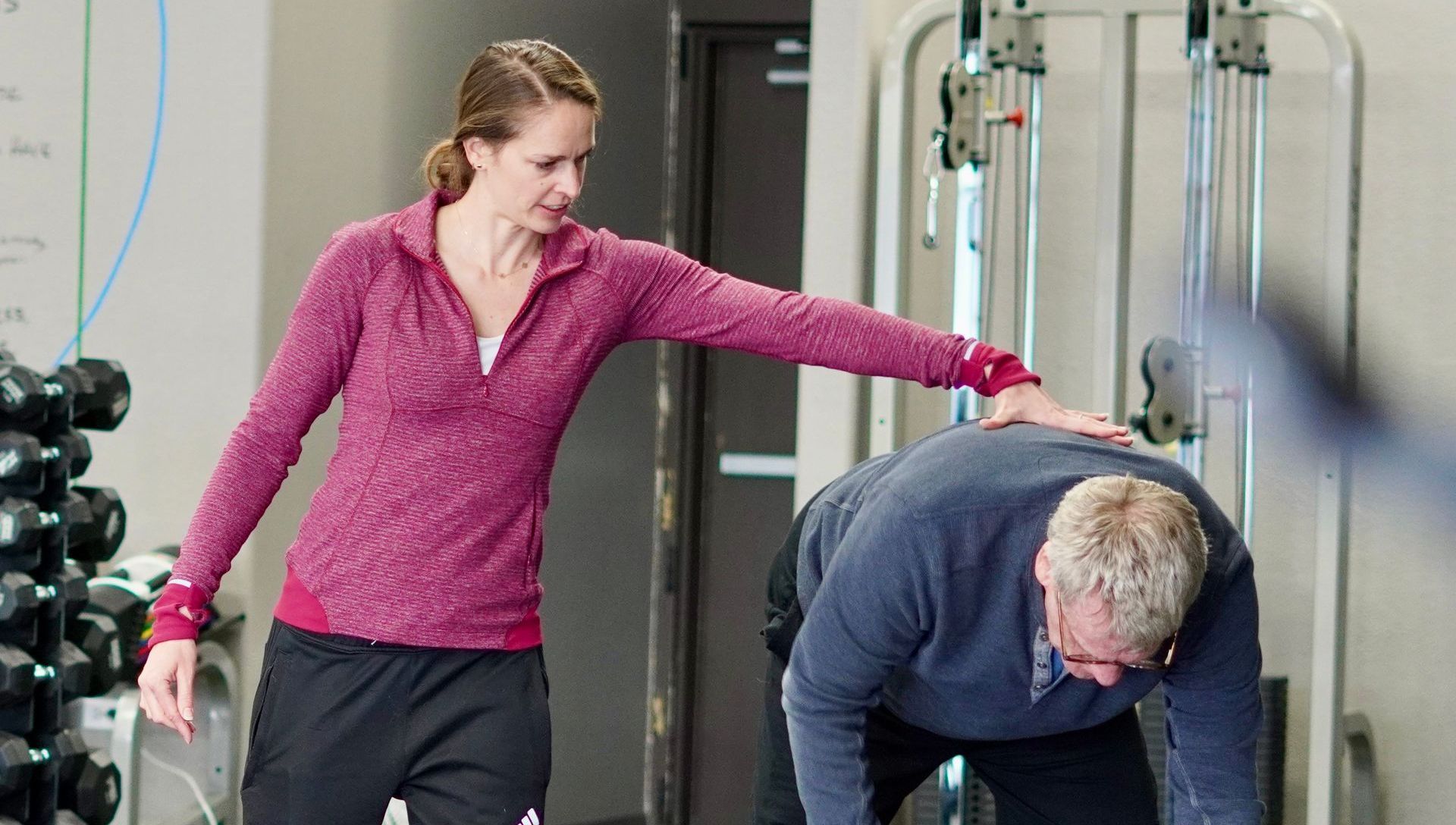
By Tom Wigginton
•
25 Feb, 2024
An Introduction to the Vitruvian Fitness ® Functional Training Phases In the interest of getting better looking and more interesting at parties, functional training is a game-changer. A well-structured functional training program identifies individual gaps in fitness and charts a path to closing those gaps then moves on to develop strength, power, athleticism, endurance, durability, and resiliency. You may be curious about our methods. We love curiosity. Here’s an attempt to explain in somewhat simple terms how we organize your training programs. We divide our work into blocks of work we call phases. Some people use the terms macro- and micro-cycles and others call them seasons. Plans that have a large time-component often include the term periodization. In the big picture, we’re all referring roughly to the same thing: beginning where you are, identifying some goals, and making progress toward those goals. So, let’s dive in exploring the different Vitruvian Fitness phases. New Client Onboarding and the FMS On day 1, your functional training journey begins with a thorough onboarding process and the Functional Movement Screen ® (FMS). This initial step ensures a personalized approach, identifying your unique strengths, weaknesses, and imbalances of several foundational movement patterns. Understanding your body's unique requirements is the foundation for a personalized program, enhancing the effectiveness of subsequent phases. Phase 3: Introductory Strength Training and Movement Mastery This phase is about learning in so many ways. First, there’s the new language of fitness (some of it is universal, some unique to us). Next, there is motor learning. Simply put, this is how your brain gets your body to move the way you want it to. And third, there’s an enlightenment so to speak. This is where many people realize that their bodies are amazing and complex and unique and have so much potential to do great things. All this to say, Phase 3 is about movement mastery. We focus on correcting issues we observe and teach you the fundamentals of weightlifting. By emphasizing proper form and technique, you develop a kinesthetic awareness that is essential for progression. Phase 4: Fundamental Strength Training As your proficiency improves, Phase 4 encourages you to begin pushing your limits with the strength exercises you learned in Phase 3. In simple terms – the goal is to get stronger – developing strength at your core, progressing out to the tips of your fingers and toes. There are lots of cool and nerdy industry expressions that describe all the things you’re accomplishing but getting and feeling stronger really sums it up. Phase 5: Maximum Strength Entering Phase 5, the program shifts from feeling stronger towards actually maximizing strength potential. By now, you’ve done the base-building and the movement patterning. Now we’re seeking actual adaptations to muscular tissues at the cellular level. Your workouts challenge your muscles and nervous system, promoting gains in raw strength. Whether you're an athlete or a fitness enthusiast, achieving maximum strength equips you to handle more demanding physical activities with ease. Phase 6: Power Development Power, the ability to generate force quickly, is the focus of Phase 6. In contrast to the progressively heavier loads from the previous phase, now we lighten the loads and start moving them with explosive speed and control. Complex movements and explosive exercises become the norm, translating strength into practical athleticism. This phase cultivates the agility and coordination needed for real-world applications, from sports performance to activities of daily living. Phase 7: Muscular Endurance Diversity is one of the central tenets of functional training. Phase 7 shifts the focus to muscular endurance, training your body to sustain effort over extended periods. Like the previous phase, the weights are lighter but once we start moving, we keep moving minimizing rest intervals. Stamina, durability, endurance, fortitude, tenacity, and stick-to-it-tiveness are the adjectives of Phase 7. Phase 8: Athletic Development In Phase 8, our program transitions to athletic development. This phase is particularly beneficial for those engaged in a life that includes domestic activities, home improvement and shockingly, sports and sporty recreational pursuits. Specialized drills and exercises hone sport-specific skills, fostering agility, speed, and coordination. Phase 9: High Intensity Intervals Phase 9 introduces High-Intensity Interval Training (HIIT). This explosive training method alternates between short bursts of intense activity and periods of rest, maximizing calorie burn and anaerobic fitness. HIIT not only boosts metabolism but also enhances cardiovascular endurance, making it a fitting climax to the program. What’s After Phase 9? The end of Phase 9 is not the end of the road; rather, it's a transition. The beauty of functional training lies in its cyclical nature. After reaching the final phase, participants return to Phase 4, completing the loop and continuing the cycle of growth and improvement. This strategic approach ensures sustained progress, prevents plateaus, and keeps the body adapting to new challenges. And now you know the secret sauce behind how we train. Curious to learn more about Vitruvian Fitness? We encourage you to do a 30-Day Trial Membership . In 30 days, you will get a private onboarding session that includes the Functional Movement Screen® , then 8 semi-private training sessions doing the program we design based on what we learn about you during that first session. And you’ll get to be a part of one of the most inviting, inclusive, and fun communities you’ll find anywhere. At the end of your trial, you decide if you liked it and if you want to continue with a regular 6-month membership. All the options and prices are on our Membership page . C lick the Get Started button to schedule a call to learn more. Our facility is conveniently located on the northwest corner of Denver in beautiful downtown Wheat Ridge.
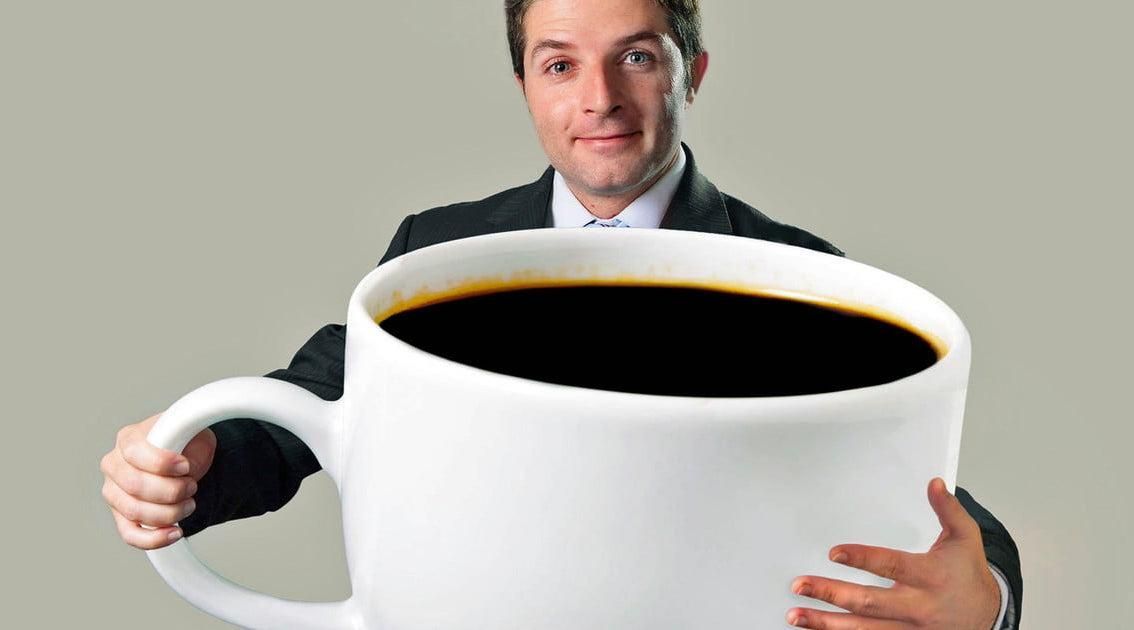
17 Feb, 2024
“What should I eat before I train?” This is a common question at Vitruvian Fitness. And the answer is: It depends. It depends on what your training goals are, your health status, the time of day you’re training, when you ate last, when you’re eating next, and what you typically eat in a day. Simple, right? So, here's the real answer: Eat what you should throughout your day making simple timing adjustments to accommodate the intensity and demands of your training. Here are some very general guidelines and from these, you’ll need to figure out what works best for you. Daily Nutrition Strategy On a daily basis, a properly nourished person consumes a well-balanced assortment of quality vegetables, fruits, protein products, beverages, and other complementary foods that make you healthy and strong. As an aspiring properly nourished person yourself, you actively seek a solution to this by reading, researching, experimenting, questioning authority, challenging convention, creating hypotheses and coming to your own educated conclusions. Here are some guidelines (which I challenge you to challenge using the scientific method). Protein . You’re consuming not less than 1 gram of protein for each pound of ideal body weight. You can get protein from animals and non-animals. Pick your preference. Carbohydrates . Carbohydrates come from fruits, vegetables, legumes, flours, and the sugar bowl. None of these are bad. It’s the quantity and timing of this energy-abundant macro-nutrient that matters. It’s like laughing. Laughing is always healthy unless you’re laughing at the wrong time. Fat . Fat is also an abundant energy source and it’s necessary for several bodily functions and is the exclusive transporter of some nutrients. Fiber . If you eat enough vegetables, you eat enough fiber. If you’re not eating enough vegetables, eat more. Fluids . Also known as water. Drink your water plain or drink it infused it with stuff like broth, tea, nourishing powders, and magic potions. Cook your food in it and with it. Spend some time doing real research on the subject. Libraries, bookstores, and the world wide web are overflowing with information. Yes, it’s overwhelming. But the streets you drive on are littered with thousands of different signs and distractions and you figured out how to navigate your way around. You’ve got this. Pre-Workout Nutrition – What you came here to learn. What time you’re going to work out will influence what to eat/drink more than any other factor. First, we’re going to assume that you’re working on the “what to eat all day equation.” The next thing to answer is, “What nourishment do I need to give myself the best training session possible?” And the last thing to consider is what your overall training objectives are. Remember this truism: Food is Fuel. You can’t drive your car from Denver to Grand Junction on a quarter tank of gas. Likewise, you can’t expect to get through a hard training session on an empty tank. But you don’t want to puke up a stomach-full of broccoli and protein products either. So, what’s the right answer? Something . The right answer is something. Not too much, not too little, not too recently, and not too long ago. When I was a wee lad growing up in the mother country, we were generally advised to wait an hour after eating before swimming or jumping on the trampoline. This was probably pretty good advice. Whatever we ate was probably still energizing us but not sitting in a bolus in our belly bouncing about looking for the exit. But what if you’re just not awake or your energy is low? Maybe this is your situation? You’re training first thing in the morning 20 minutes after waking up? You’re training 3 hours after lunch and right before dinner? It’s been a long day of sitting at your desk, driving in your car, or Zooming with New Zealand? Here are some ideas. Coffee or Tea – for the caffeine Oatmeal – for the carbohydrates* Fruit – for the carbohydrates Prepackaged “pre-workout” drinks – for the caffeine and other legal stimulants Prepackaged “energy” bars – for the carbohydrates * Fun fact : Cold oatmeal, like overnight oats, digests more slowly than hot oatmeal making the absorption of carbohydrates slower which has some benefits. Beans, lentils and cold potatoes work the same way. These are known as resistant starches. Look it up! Getting your money’s worth. This is about the economics of training and the allocation of finite resources. If you show up for your training session fired up and ready to go and you make it a habit of showing up fired up and ready to go, you can expect great results from your training over time. Conversely, if you habitually show up for your training tired and malnourished, then you will get poor results from your training over time. You don’t have to be perfect all the time. Just do your best as often as you can. If your time and energy are limited resources, how do you want to spend them and what do you expect from them? Being well-nourished, focused, alert, and ready for action is the secret. Curious to learn more about Vitruvian Fitness? We encourage you to do a 30-Day Trial Membership . In 30 days, you will get a private onboarding session that includes the Functional Movement Screen® , then 8 semi-private training sessions doing the program we design based on what we learn about you during that first session. And you’ll get to be a part of one of the most inviting, inclusive, and fun communities you’ll find anywhere. At the end of your trial, you decide if you liked it and if you want to continue with a regular 6-month membership. All the options and prices are on our Membership page . C lick the Get Started button to schedule a call to learn more. Our facility is conveniently located on the northwest corner of Denver in beautiful downtown Wheat Ridge. Attribution: This article was written with assistance of ChatGPT.

By Tom Wigginton
•
10 Feb, 2024
Breathing and Exercising – An Inseparable Relationship Among the many reasons our clients engage with Vitruvian Fitness ® , one is to learn the right and safe way to exercise with “good form.” We define "good form" as the proper execution of movements with optimal technique, posture, range of motion, motor control, breathing, and awareness to achieve the desired fitness outcome while minimizing the risk of injury. This story is about how your breath fits into the good form equation. Fact: Synchronizing your breath with the exercise you are performing is no less important than any other component of what constitutes good form. What does it mean to synchronize your breath? In most resistance training exercises, there are two phases of any movement: the eccentric (ee-SEN-trick) or loading phase, and concentric (con-SEN-trick) or exploding phase. Inhale as you load. Exhale as you explode. Vigorously or forcefully. Examples: Squat: Inhale as you bend your knees and hips. Exhale as you begin to stand tall returning to the start position. Push Up: Inhale as you lower your chest to the floor. Exhale as you begin to push yourself back up to the start position. As the demand of an exercise increases, so does the need to brace your core proportionately. This manifests both in the stiffness of your trunk and in the intensity of your exhalation as it rises to match the increased demands of the work. This is just to say, brace your core, purse your lips, and blow. However, this can be far easier said than done. Fortunately, we’ve all experienced blowing up balloons – the ultimate party favor. Blowing up a balloon is the easiest way to feel how this works. (And we have 2 big bags of balloons at the front desk to practice with!) The drill: Blow up a balloon till it’s mostly full. While you’re blowing, feel how your core braces to create the pressure that inflates the balloon. This is the same type of pressure you want to feel when lifting something heavy. Repeat 6 times. It’s ok to giggle a little while letting the air out. To continue with the party theme, imagine blowing out your birthday candles. If you breathe on the candles like you’re fogging a mirror, it’s not going to work (especially for us folks with lots of candles). But if you take a deep breath, purse your lips and give it a hardy blow, the extra wind you create will get most of those candles. If you slobber on the cake, that’s not my fault. Now let’s get a little nerdy. Why is breathing important and what’s happening when we do it right? Breathing has three aspects to it. Biomechanical Biochemical Psycho-physiological Bio mechanical Aspect of Breathing: The mechanical aspects of breathing involve respiratory muscles, lung mechanics, and airflow dynamics. During exercise, breathing biomechanics adapt to accommodate increased ventilation needs, with changes in respiratory rate and tidal volume supporting metabolic demands. Further, respiratory muscles co-contract with other muscles of the core to assist in optimizing movement. This is primarily the act of inhaling and exhaling. Bio chemical Aspect of Breathing: Breathing plays a vital role in gas exchange and acid-base balance, impacting cellular metabolism and physiological function. This biochemical aspect is closely tied to exercise, where increased metabolic demands require enhanced respiratory function to meet oxygen needs and remove metabolic byproducts. This is primarily an exchange in oxygen and carbon dioxide. Psycho -physiological Aspect of Breathing: This aspect refers to the interaction between the mind and body in relation to breathing. Psycho-physiological factors encompass cognitive, emotional, and behavioral aspects of breathing, including perceptions, attitudes, and psychological states. Breathing is also intricately linked to the autonomic nervous system, with vagal tone and the balance between parasympathetic and sympathetic activity influencing respiratory and cardiovascular function in addition to regulating other systems in the body. If you image these three aspects of breathing making up a Venn Diagram, where they overlap is where optimal breathing patterns and efficiency lie and the interdependence between them is clear. Inefficiencies or shortcomings in any one of the three will have a negative impact on the other two. This is as true in activities of daily living as it is while exercising. A Real World Example Imagine you’re doing a set of 8-12 goblet squats and we just encouraged you to up the weight. You pick up the weight and put it in position. It’s heavy. Subconsciously, you brace yourself which is a good idea but you’re mildly anxious about the extra weight, so you also subconsciously hold your breath. You lower yourself into the squat, get as low as you’re going to get, and push yourself back up to the start position. And then you relax a little and the air comes rushing out of your wide-open gob. You continue this way for 8 reps before you put the weight down totally out of breath, panting like a dog on a hot day. Biomechanically , you tried to create some intra-abdominal pressure (this is good) but by holding your breath, you created extra tension throughout your hips, trunk, and shoulders making you overly stiff and your squats shallow. This likely also raised your blood pressure which created a risk you should probably avoid. Biochemically , you accumulated extra carbon dioxide in your lungs without replacing it with fresh oxygen. So, your blood became oxygen depleted and that starved your muscles of the key ingredient they need to work right. Psycho-physiologically , you stressed yourself out and maybe were a little sad or confused that one set of 8 was so challenging. It was your breath. I can say with confidence that in this scenario, inhaling as you lower, exhaling as you rise, using a proportionate amount of intra-abdominal pressure for the weight in your hands – you will squat lower, easier, with more confidence and swagger. Among the solutions to this breathing issue, are: Reducing the weight to a level that allows you to meet every aspect of “good form.” This may include adding assistance instead of using resistance. Mindfully and purposefully, committing to synchronize your breath to the movement one repetition at a time until it becomes second nature. So, take all this information and see how you can improve the way you move by breathing more effectively and efficiently. It will change your life. Extra Help One last point I need to make about breathing. By now, I hope to have communicated how important breathing is. If you are aware of your breath, and it’s role in your life, and you’re making improvements, that’s great. Keep it up! However, if, despite our guidance and your best efforts and intentions, you cannot get your breathing right, you should probably seek additional help. Because breathing is mechanical, chemical, and psychophysiological, it may benefit from a multi-disciplinary approach. Pulmonologists, Sports Medicine Physicians, Physical Therapists, Certified Respiratory Therapists, and/or Mental Health Counselors may be right for you. Other modalities that are breath-centric or breath-inclusive are Alexander Technique, Feldenkrais Method, Somatic Experiencing, Tai Chi and Qigong, Pranayama. Good Form It’s equal parts technique, posture, range of motion, motor control, breathing, and awareness. It seems like a lot because it is. Our bodies are amazing, though. Amazing how complex they are with so many integrated and interdependent systems working together. Amazing because they learn and adapt. Amazing how our bodies communicate with us when we listen to them. And amazing because of the really cool things we can do and experience. Have a great day and go do something really cool. Curious to learn more about Vitruvian Fitness? We encourage you to do a 30-Day Trial Membership . In 30 days, you will get a private onboarding session that includes the Functional Movement Screen® , then 8 semi-private training sessions doing the program we design based on what we learn about you during that first session. And you’ll get to be a part of one of the most inviting, inclusive, and fun communities you’ll find anywhere. At the end of your trial, you decide if you liked it and if you want to continue with a regular 6-month membership. All the options and prices are on our Membership page . C lick the Get Started button to schedule a call to learn more. Our facility is conveniently located on the northwest corner of Denver in beautiful downtown Wheat Ridge. Attribution: This article was written with assistance of ChatGPT.
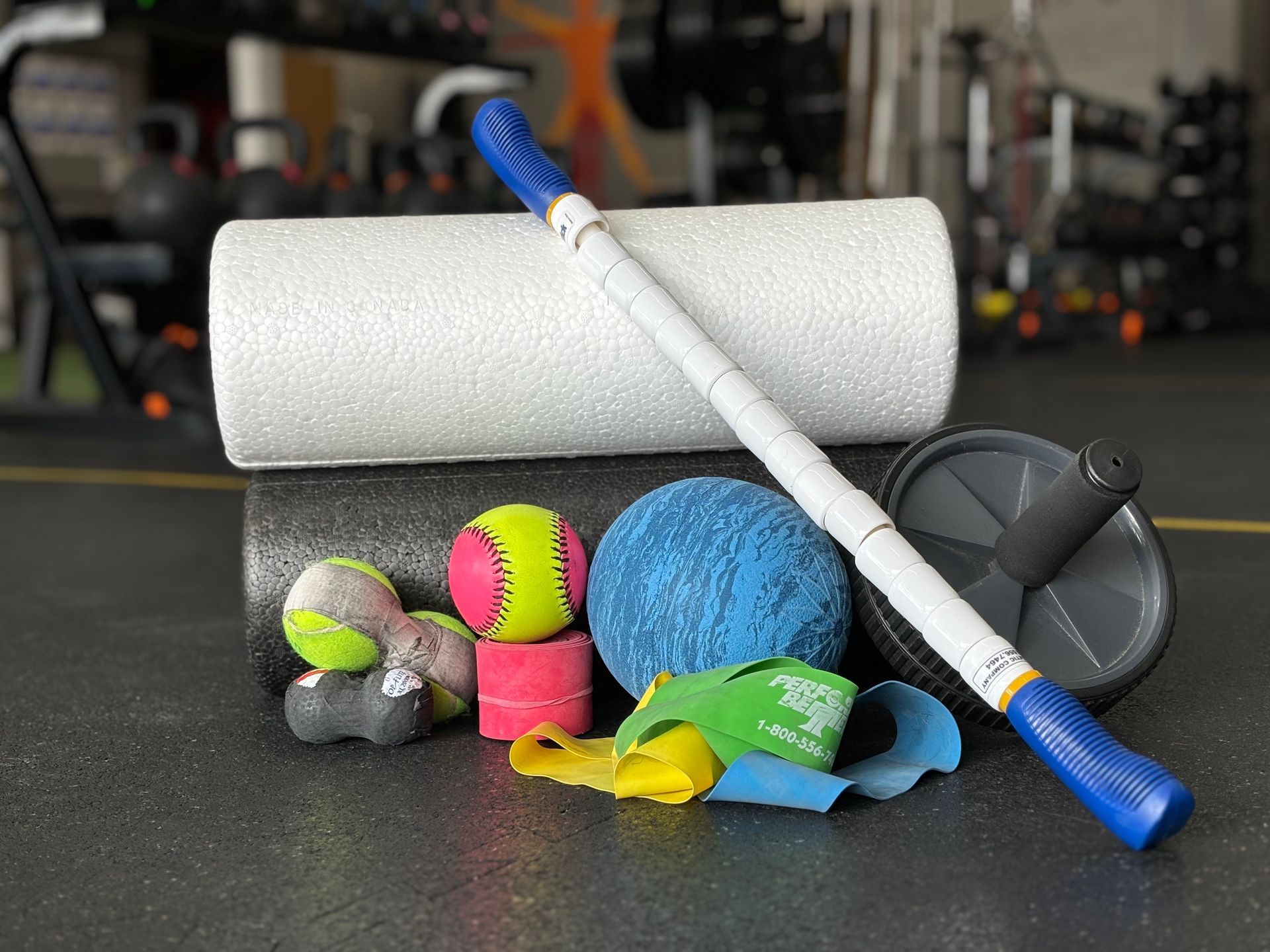
By Tom Wigginton
•
31 Jan, 2024
The WHY behind the Tissue Prep Every Vitruvian Fitness training session begins with 7-12 minutes of Tissue Prep. The process is also known as “foam rolling,” “self-myofascial release,” or even “trigger point therapy.” And while none of those terms are wrong, they don’t completely describe the entire process. Hence our use of the broader term Tissue Prep. In the interest of cutting to the chase (I'm a chase-cutter-to-er), first up is an explanation of the myriad benefits of tissue prep followed by some additional thoughts and ramblings. Here is a list of the features, advantages, and benefits of thorough, thoughtful, and explorative tissue prep. Increased Flexibility and Range of Motion: Foam rolling can help improve flexibility and increase your range of motion by breaking up adhesions and releasing tension in the muscles and fascia. Exercising all our joints in their most optimal range of motion is more functional and effective. Improved Blood Circulation: The application of pressure can enhance blood flow to the targeted muscles, promoting better oxygen and nutrient delivery. Activation of Neuromuscular Pathways: Foam rolling stimulates mechanoreceptors in your tissues which improves communication between the nervous system and muscles. Effective and efficient two-way communication between them is critical to good movement. Stimulation of the Somatosensory System: Similar to the above benefit, tactile stimulation and pressure activates sensory receptors that increase proprioceptive awareness. Proprioceptive awareness informs your brain where your joints and body are in space - another critical component of good movement. Enhanced Warm-up: Tissue preparation is part of a better warm-up – increasing muscle temperature and preparing the body for more intense physical activity. Reduced Muscle Stiffness and Soreness: Self-massage techniques may help alleviate muscle stiffness and soreness by reducing tension and promoting relaxation. Ahhhh. Avoidance of Injury: By being mindful and thoughtful about how your body feels when rolling certain muscle groups, it raises your awareness of your ready-state. If you discover an imbalance, asymmetry, or problem spot, you can address it or take it into consideration when exercising later - either by solving the issue you didn't know you had or by being cautious while performing movements involving those tissues. Efficient Training Sessions: When any or all of the these benefits of tissue prep help you feel better, move better, enhance awareness, and so on, your training sessions have better outcomes because the quality of the exercise inputs are better. It's like using higher quality ingredients at dinner. Healthy proteins and fresh vegetables nourish the body better than processed meats and deep-fried vegetables. Healthy input, healthy outcome. Improved Posture: Regular use of self-myofascial release techniques may contribute to improved posture by addressing tightness in muscles that can affect body alignment. It Feels Good Once the discomfort of rolling certain connective tissues and muscle groups diminishes, tissue prep really does feel amazing. For that reason alone, we should do way more. #itfeelsgoodtofeelgood The Tools: A simple foam roller will always suffice. Softer is frequently more effective than harder. We also use tennis balls, golf balls, softballs, posture balls, sticks, canes, voodoo floss, vibration, and percussion massagers. We have access to all these tools so we use them. But if all you've got is a foam roller, that's enough. Final Thoughts: We understand there’s a mindset that believes the benefit of strength training lies exclusively in the heavy lifting, the power moves, and the heart-thumping cardiovascular suffer-fests. The reality is, the first twenty-five-ish minutes of prep work we do (which includes other mobility, motor control, and core stimulation work) is never less important than the second twenty-five-ish minutes of strength training. I genuinely hope to convey the value of this process and that you take it heart and put it into regular practice. Because then, hopefully , we’ll start fielding questions about how much more and what else we could and should be doing instead of having conversations about not doing it enough. We literally ( literally, not figuratively ) have hundreds of anecdotes about people reporting joint pain during their training session only to discover that they skipped their tissue prep or did it mindlessly. And after we revisit the process, the pain vanishes. That’s not hyperbole. Regarding this last point though: sometimes the joint pain you report is an actual injury or problem outside the scope of our practice. In those cases, you should see a physical therapist (like Char Challenger-Smith!), chiropractor, orthopedist, or other medical professional licensed to diagnose and treat conditions like these. The moral of the story: Mindfully explore how your muscles feel. Pay attention to what feels good and do more of it. Identify what doesn't feel good and pledge to work on resolving it. Don't be in a hurry. Breathe. And then get under the bar and do something cool and heroic. Maybe even let out a little grunt. Curious to learn more about Vitruvian Fitness? We encourage you to do a 30-Day Trial Membership. In 30 days, you will get a private onboarding session that includes the Functional Movement Screen® , then 8 semi-private training sessions doing the program we design based on what we learn about you during that first session. And you’ll get to be a part of one of the most inviting, inclusive, and fun communities you’ll find anywhere. At the end of your trial, you decide if you liked it and if you want to continue with a regular 6-month membership. All the options and prices are on our Membership page. Click here to sign up now or click the Get Started button to schedule a call to learn more. Our facility is conveniently located on the northwest corner of Denver in beautiful downtown Wheat Ridge. Attribution: This article was written with assistance of ChatGPT.
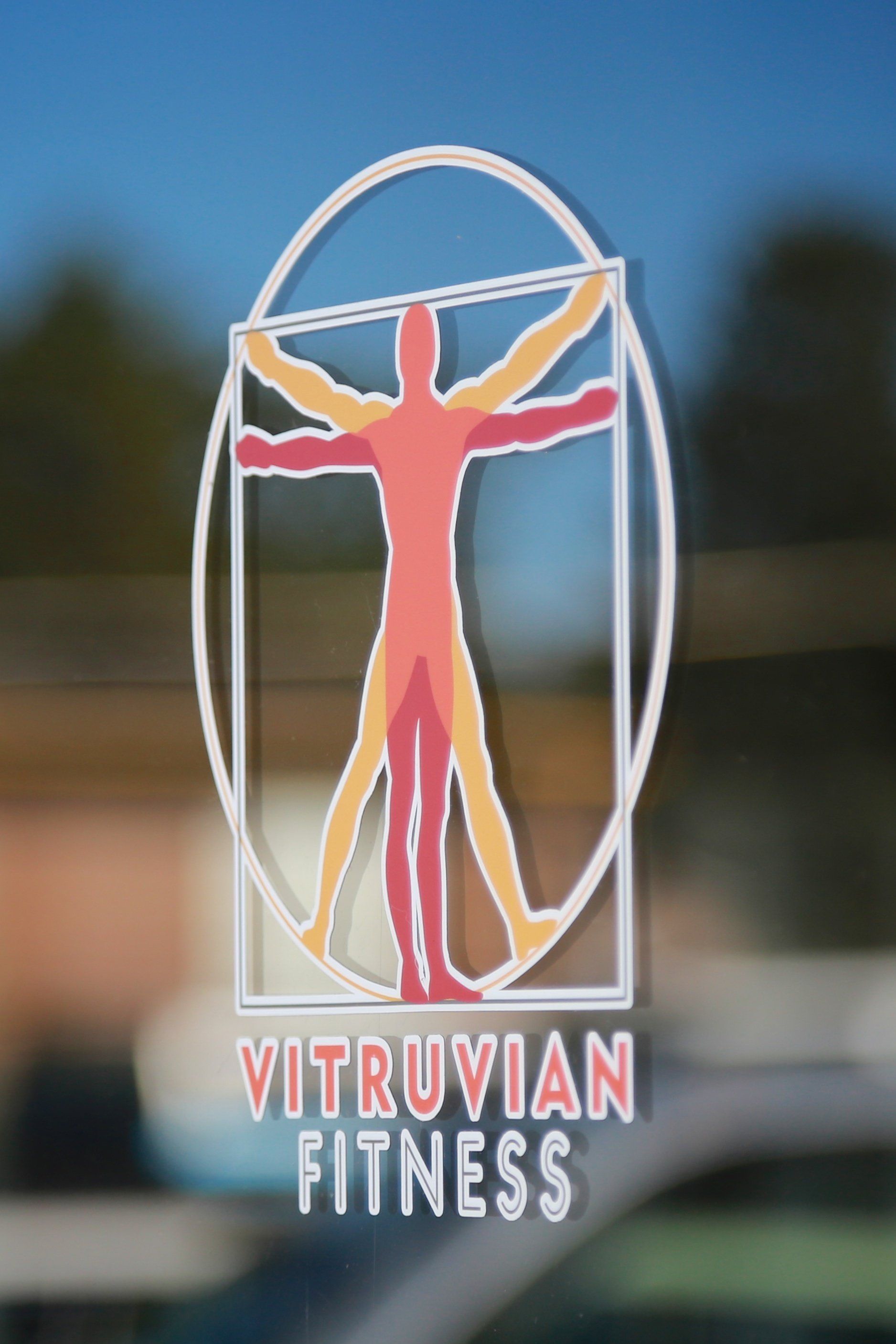
By Tom Wigginton
•
25 Jan, 2024
The Circle and the Square Leonardo da Vinci created the Vitruvian Man over 500 years ago in the late 15th century of Renaissance Florence. While the Man in the drawing appears to be the focal point, it’s his relationship to the circle and the square in which he is drawn that gives the piece context and meaning. The Renaissance Period of history is characterized by the revival of classical learning and the development in humanism and innovation across multiple disciplines. And so, the Vitruvian Man is among the works of art that beautifully illustrate that blending of art, science, and philosophy. The circle is a geometric shape whose circumference is drawn with equidistant points on a radius originating from its center – in our illustration, a man's belly button. But the circle is also symbolic of the divine perfection found in the natural world, reflecting an eternal and harmonious flow. The square is a geometric shape with four sides of equal length connected at four right angles. In our drawing, the width of his arm span is equal to his height. This underscores the mathematical and intellectual framework reflected in human anatomy and further represents stability and rationality. Together, these geometric shapes epitomize the Renaissance synthesis of art and science, overlapping da Vinci's exploration of the interconnectedness of the microcosm (human body) and macrocosm (larger universe). On our back wall, we painted our version of the Vitruvian Man as recognition of the interconnected relationships within our body and interdependent relationships of our bodies with the world around us. Not only are our various bodily systems (musculoskeletal, cardiovascular, nervous, endocrine . . . .) inseparable in our approach to health and fitness, neither are our bodies separable from our minds and our environment. Art, science, philosophy, movement, community, humanism – it’s all one. Further reading: 1 , 2 , 3 . Curious to learn more about Vitruvian Fitness? We encourage you to do a 30-Day Trial Membership. In 30 days, you will get a private onboarding session that includes the Functional Movement Screen® , then 8 semi-private training sessions doing the program we design based on what we learn about you during that first session. And you’ll get to be a part of one of the most inviting, inclusive, and fun communities you’ll find anywhere. At the end of your trial, you decide if you liked it and if you want to continue with a regular 6-month membership. All the options and prices are on our Membership page. Click here to sign up now or click the Get Started button to schedule a call to learn more. Our facility is conveniently located on the northwest corner of Denver in beautiful downtown Wheat Ridge.
VITRUVIAN FITNESS
Locally owned fitness studio specializing in semi-private personal training. Locally serving the Highlands neighborhoods of NW Denver, Wheat Ridge, Arvada, Lakewood, Applewood, Golden, and virtually across the USA.
